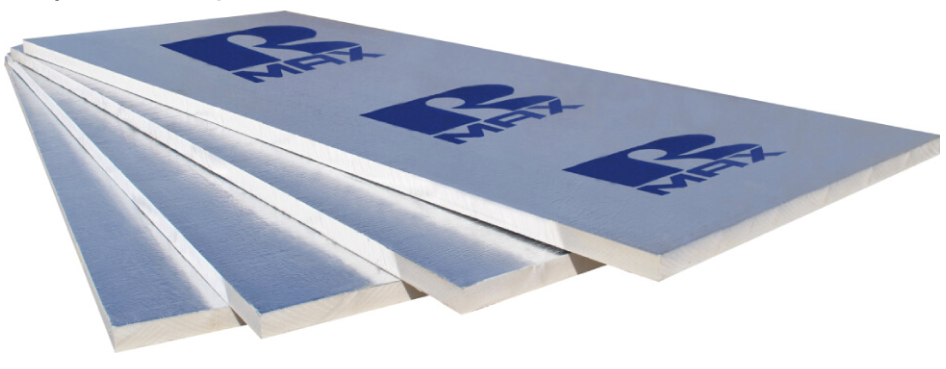In building construction and renovations, insulation is a crucial component for maintaining energy efficiency and occupant comfort. Insulation slows the flow of heat into or out of a building, which makes it a vital function in any building. Among various insulation types, foam board insulation stands out for its efficiency and versatility.
Exploring foam board insulation in depth by discussing its types, benefits, and applications makes it much easier to choose the right product for your specific needs.
Understanding Foam Board Insulation
Foam board insulation, or rigid foam insulation, is a type of insulation material made from plastics—such as polystyrene, polyisocyanurate, and polyurethane—that can be tailored to fit various spaces within a structure.
While many types of insulation like fiberglass, cellulose, and mineral wool are available in rolls or in a blown-in format, rigid foam board insulation is much different. Foam board comes in a large sheet and looks more like a sheet of plywood than a batt of insulation.
Furthermore, unlike other types of insulation, foam board is strong and self-supporting, which means that it does not sag and fall down when placed into wall cavities.
The key advantage of foam boards is their high R-value—a measure of thermal resistance—which makes them highly effective at reducing energy costs by preventing heat loss or gain.
Types of Foam Board Insulation
There are several varieties of foam board insulation, each suited to different applications and with its own unique benefits. Three of the most common types of rigid foam board insulation are:
Expanded Polystyrene (EPS)
EPS is the most economical option and it provides adequate insulation with moderate R-value, which makes it a common choice for residential walls.
Extruded Polystyrene (XPS)
XPS offers better moisture resistance and a higher R-value, so it is ideal for use in areas susceptible to moisture, such as basements and exterior walls.
Polyisocyanurate (Polyiso)
Polyiso has the highest R-value per inch and often features a radiant barrier, which is particularly effective for roofs and exterior walls where maximum insulation is critical. Polyiso also has less impact on the environment due to its recyclability and cleaner manufacturing process.
Benefits of Using Foam Board Insulation
Foam board insulation comes with multiple advantages, though its high energy efficiency is perhaps the most significant benefit because it can substantially reduce heating and cooling costs.
Because rigid foam board insulation is self-supporting, it will not sag over time like other types of insulation might. This strength helps to keep a building operating as designed years into the future.
The material is also known for its moisture resistance, which helps prevent issues like mold growth and structural decay. Additionally, foam boards are lightweight and easy to install, which can lead to reduced labor costs and faster completion of construction projects. Its versatility allows it to be used effectively in various building applications, from roofs to basements, for a comprehensive insulation solution.
Applications and Installation of Foam Board Insulation
Foam board insulation is exceptionally adaptable, suitable for use in walls, roofs, attics, and floors. It can be installed internally in cavity walls or externally under siding to provide effective thermal breaks and enhance interior climate control.
Continuous insulation is an exterior, unbroken plane of insulation that wraps around a building. The advantages of foam board insulation make continuous insulation a possibility.
When installing foam board insulation, it’s important to ensure a precise fit between framing studs to prevent thermal bridging. Joints should be sealed to enhance thermal performance and reduce air leaks. Protective gear should be worn when cutting foam boards to avoid irritation from particles.
Comparing Foam Board Insulation with Other Types
When compared to other insulation materials like fiberglass and cellulose, foam board insulation offers superior thermal resistance and moisture protection.
Although it may sometimes come with a higher initial cost, its efficiency in energy saving and low maintenance needs provide long-term benefits, to make it a cost-effective choice for many building environments.
Polyiso: High-Performing Foam Board Insulation
Foam board insulation is a robust tool for enhancing building energy efficiency.
Understanding its types, benefits, and proper installation techniques can lead to significant improvements in building performance and occupant comfort.
Whether you are embarking on a new construction project or upgrading an existing structure, consulting with a professional can ensure that the insulation choice meets all specific requirements effectively.
To learn more about foam board insulation and the advantages of Polyiso, reach out to the team at Rmax today!



